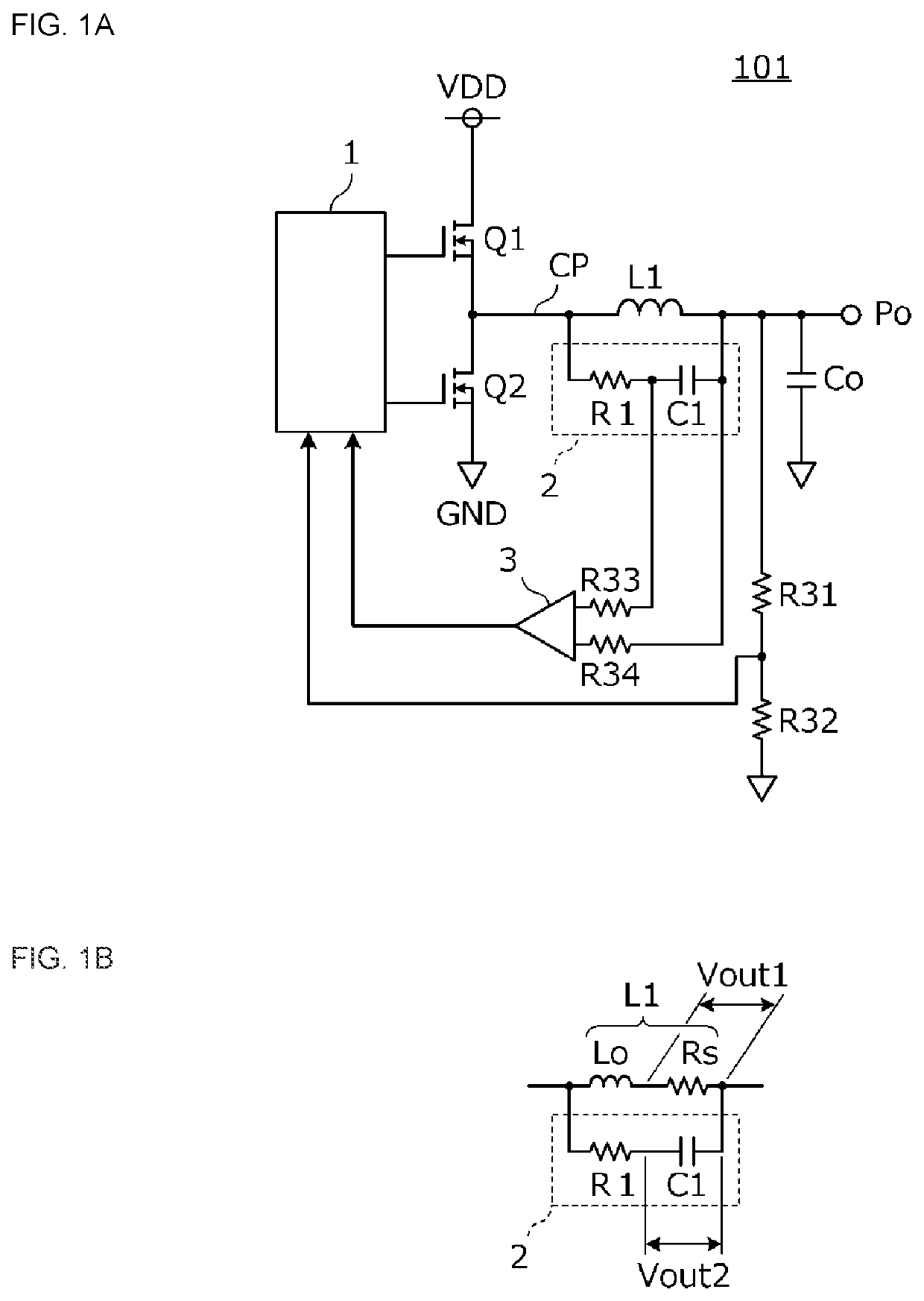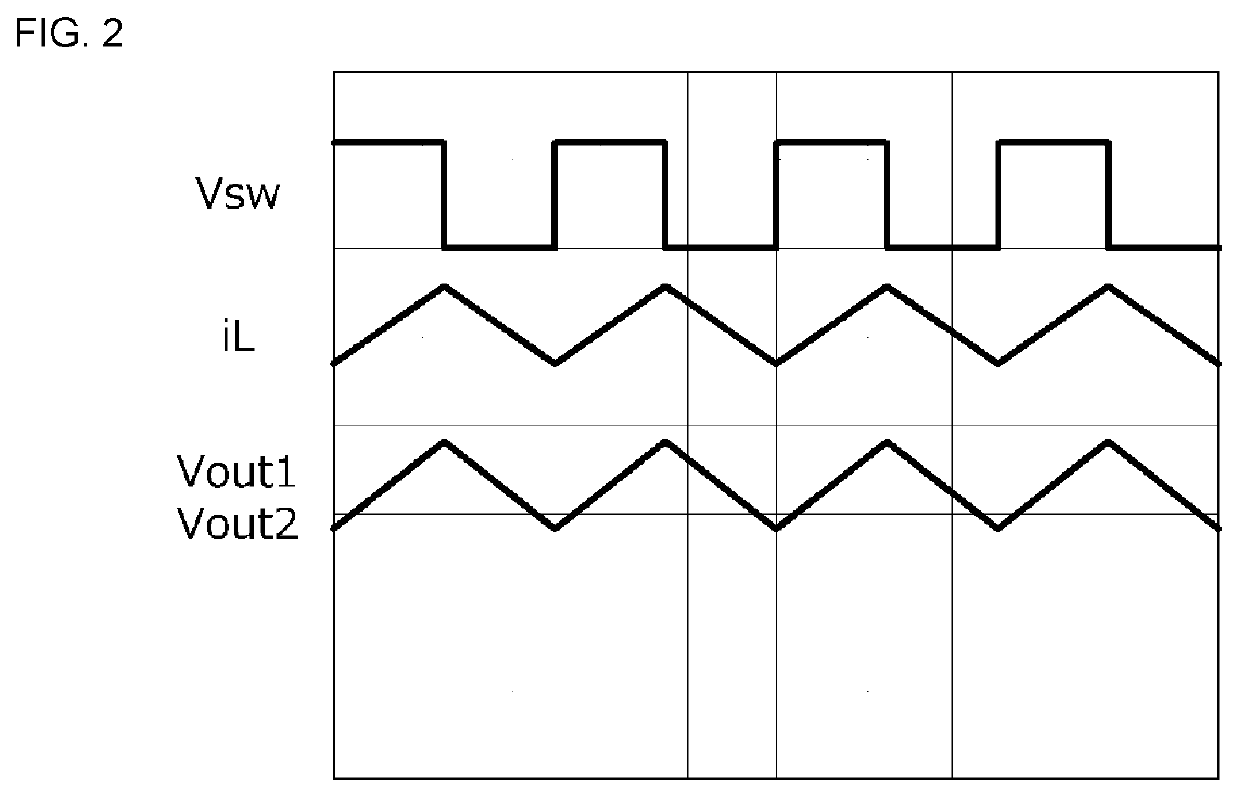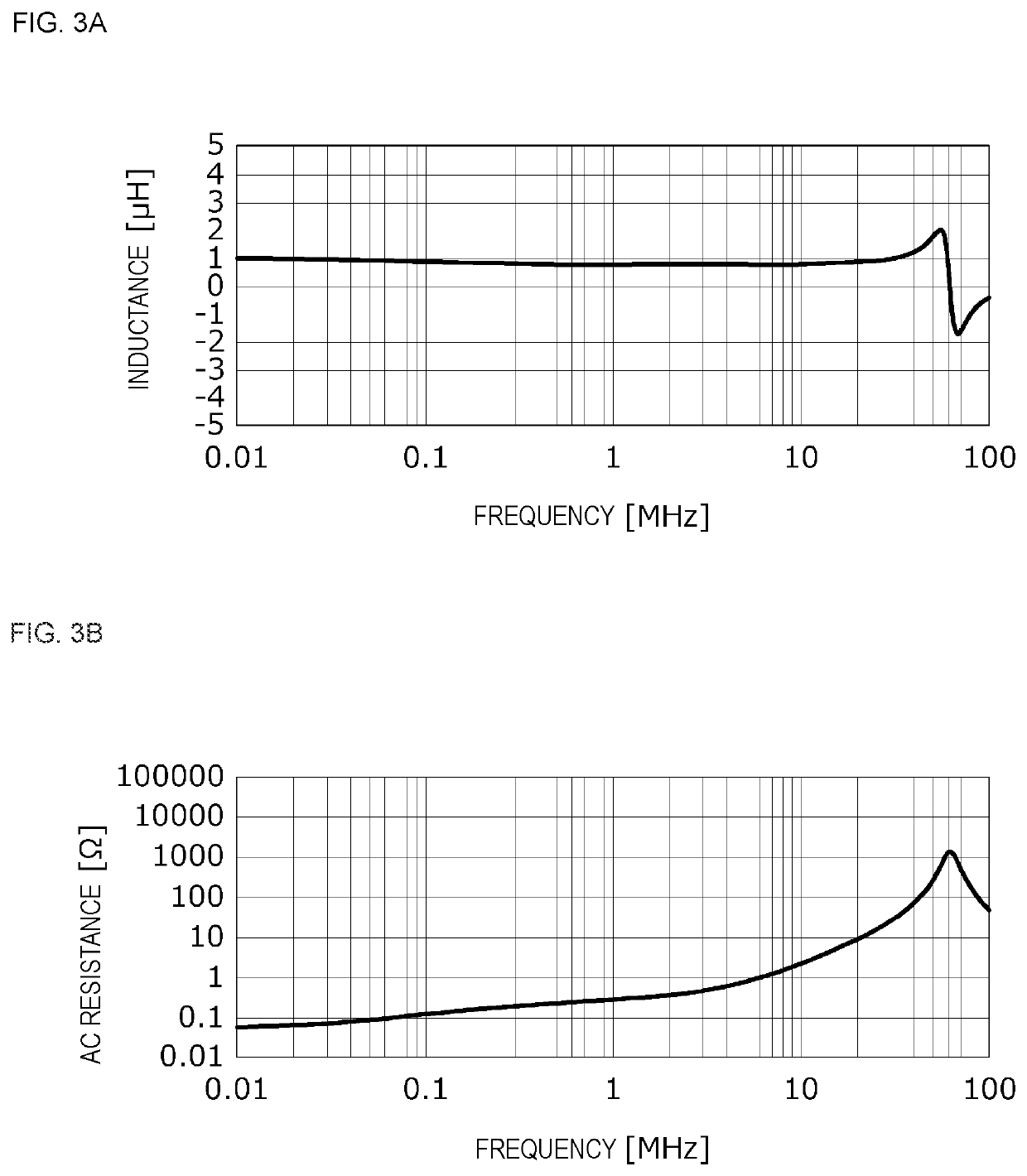Switching power supply apparatus
a power supply and power supply technology, applied in the direction of electric variable regulation, process and machine control, instruments, etc., can solve the problems of inaccurate detection of current, inability to use circuit elements in power conversion circuits, and inapplicability of circuits, etc., to achieve high current detection accuracy, simple circuit configuration, and high efficiency of power conversion
- Summary
- Abstract
- Description
- Claims
- Application Information
AI Technical Summary
Benefits of technology
Problems solved by technology
Method used
Image
Examples
first embodiment
[0032]FIG. 1A and FIG. 1B are circuit diagrams of a switching power supply apparatus according to a first embodiment. A switching power supply apparatus 101 includes an inductor L1, a capacitor Co, switching elements Q1 and Q2, a switching control circuit 1, an inductor current detection circuit 2, a differential amplifier circuit 3, and resistive elements R31, R32, R33, and R34. VDD denotes a power supply voltage terminal and GND denotes a ground terminal.
[0033]The inductor L1 is connected in series to a current path CP through which current is supplied to an output portion Po. The capacitor Co is connected in parallel to the output portion Po (connected between a voltage output end of the output portion Po and ground). The switching elements Q1 and Q2 generate switching current flowing through the inductor L1. The switching control circuit 1 performs switching control of the switching elements Q1 and Q2. The inductor current detection circuit 2 detects current flowing through the ...
second embodiment
[0070]In a second embodiment, an example of a power system is described, which is configured so that the inductor current of each cell converter is detected to attain current balancing in a switching power supply apparatus having a multicell converter configuration.
[0071]FIG. 8 is a circuit diagram of the power system according to the second embodiment. This power system includes two cell converters 11 and 12 and a microprocessor 5 controlling the cell converters 11 and 12. The cell converters 11 and 12 each include the inductor L1, a capacitor Ci, the capacitor Co, the switching elements Q1 and Q2, the switching control circuit 1, the inductor current detection circuit 2, and a load balancing controller 4.
[0072]The load balancing controller 4 detects voltage at the output portion Po and supplies a feedback signal to the switching control circuit 1 so that the output voltage has a certain value. The two load balancing controllers 4 are connected to each other with a current sharing ...
third embodiment
[0076]In a third embodiment, an example of a power system is described, which is configured so that the inductor current of each cell converter is detected to attain current balancing in a switching power supply apparatus having a multiphase converter configuration.
[0077]FIG. 10 is a circuit diagram of the power system according to the third embodiment. This power system includes six cell converters and the microprocessor 5 controlling the six cell converters. Each cell converter includes a switching circuit DD, the load balancing controller 4, the resistive elements R31 and R32, the inductor L1, and an inductor current detection circuit composed of the detection resistor R1 and the detection capacitor C1. The switching circuit DD is composed of a switching element and a switching control circuit. The switching circuit DD performs a switching operation when an enable signal input into an enable signal terminal EN is valid and stops the switching operation when the enable signal is i...
PUM
 Login to View More
Login to View More Abstract
Description
Claims
Application Information
 Login to View More
Login to View More - R&D
- Intellectual Property
- Life Sciences
- Materials
- Tech Scout
- Unparalleled Data Quality
- Higher Quality Content
- 60% Fewer Hallucinations
Browse by: Latest US Patents, China's latest patents, Technical Efficacy Thesaurus, Application Domain, Technology Topic, Popular Technical Reports.
© 2025 PatSnap. All rights reserved.Legal|Privacy policy|Modern Slavery Act Transparency Statement|Sitemap|About US| Contact US: help@patsnap.com



